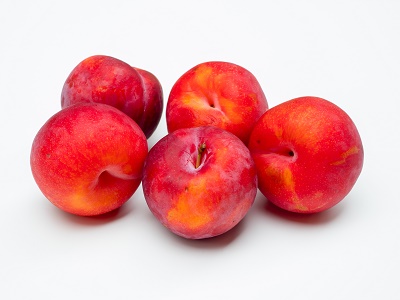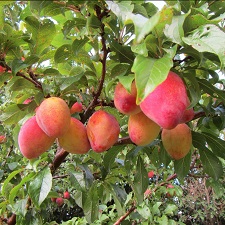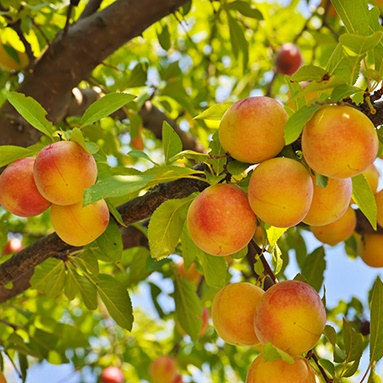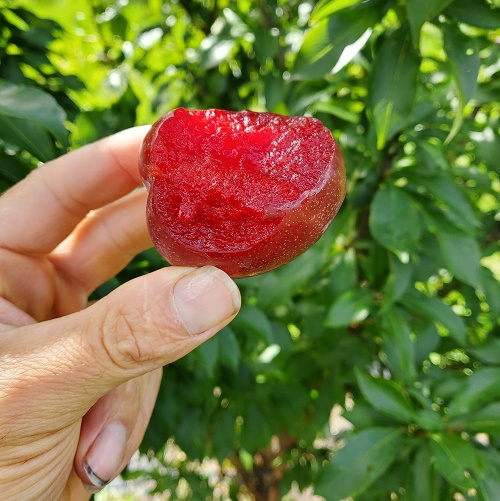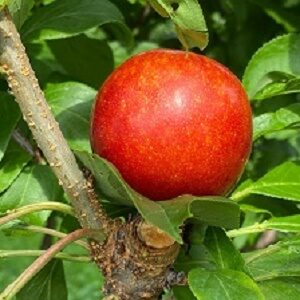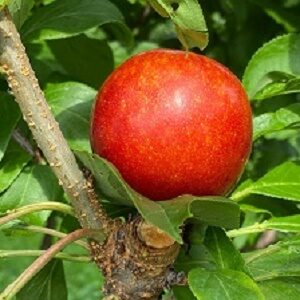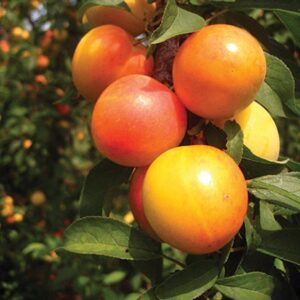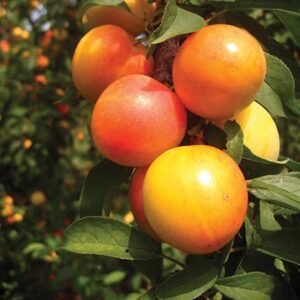Japanese Plum : BURBANK Semi-Dwarf (Marianna 26-24) (Orchard Grade)
$42.95
An 'orchard grade' is a tree that may be somewhat shorter, slightly crooked, or a bit scratched, or for some other reason is not a perfect front lawn specimen. These trees will work just as well in an orchard as a first or number one would, since they still produce the very same fruit.
Presenting the quintessential Japanese plum. Luther Burbank of Santa Rosa, CA, who lived from 1849 to 1926 is recognized as one of the most prolific and influential plant breeders of all time. During his 50 year career, he created more than 800 varieties of fruits, vegetables, nuts and flowers! This included about 60 (same sources say over 100) varieties of plums. Ironically, no horticultural wizardry was needed to develop the plum which bears his name. It was, in fact, one of a batch of 12 seedlings which Luther Burbank imported from Japan in 1885. The fruit of this particular tree proved to be quite superior. Generations of plum lovers have favoured the large, deep red fruit with sweet, meaty, amber flesh. The tree is hardy, rather low-growing, and somewhat drooping. It bears early and sets heavily, so fruit thinning is recommended.
NEEDS A POLLENIZER | ZONE 5 | HARVEST : MID - LATE AUG.
Rootstocks
G41 Dwarf
G935 Small Semi-Dwarf
G969 Small Semi-Dwarf
G30 Semi-Dwarf
G890 Semi-Dwarf
Pollenator definitions
NEEDS A POLLENIZER ̶ means another tree of the same type or kind but a different variety must be blooming nearby at the same time.
EXAMPLE A Liberty apple and a Wealthy apple can cross-pollinate. Two trees of the same variety ie: ̶ 2 Wealthy apples, cannot cross pollinate because they are genetically identical.
Other trees are marked as SEMI-FERTILE. These will set fruit without a second tree. However they will often bear more, and sometimes larger fruit if another variety of the same kind of tree is nearby.
You can select 2 different trees of the same kind marked as NEEDS A POLLENIZER or plant one of those along with one SELF-FERTILE or one SEMI-FERTILE. Also consider ripening times ̶ a Goldrush apple might not start blooming before a Pristine is finished.
